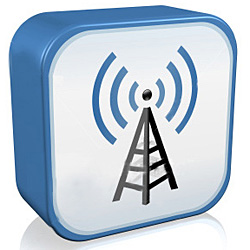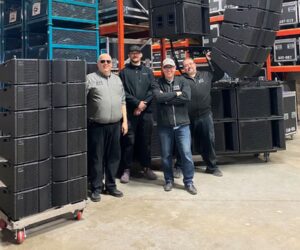Sennheiser has issued a statement following the recent ruling by the Federal Communications Commission (FCC) regarding proposed “white space” consumer devices, noting that “the sky will not fall after February 17th” – the date for digital TV conversion.
The statement also addresses several specific aspects of the new rules, including safeguards that are intended to protect wireless microphone systems, and notes a customer support program the company has put into place to help customers/wireless users clarify wireless usage in addition to addressing specific issues such as frequency coordination.
Although the introduction of TVBDs (formerly known as “white space devices”) will pose new challenges for wireless mic users, multi-channel operation can be made reliable through the use of quality equipment operated using best practices,” notes Joe Ciaudelli, Sennheiser’s White Space spokesperson.
Here’s the full statement:
The White Space Ruling: Chicken Little Can Take a Deep Sigh of Relief
Following the recent ruling by the Federal Communications Commission (FCC) regarding proposed “white space” consumer devices, Sennheiser is taking steps to assure users of wireless audio products that the sky will not fall after February 17th (the deadline for the digital TV conversion). The anticipation of these changes has caused a great deal of anxiety for many customers. However, not only have a variety of safeguards been put in place by the FCC ruling to help prevent interference between the unlicensed consumer devices and RF wireless microphones, but Sennheiser is launching enhanced customer service and support programs.
As a first level, Sennheiser is offering a free initial consultation service via phone to answer questions from users or dealers and to address each individual situation. Anyone wishing to receive a call from an RF specialist regarding the operation of any wireless mic or monitoring equipment after February 17, 2009 may sign-up on the company’s dedicated website. Higher level services will include on-site spectrum analysis, frequency coordination, as well as service contracts.
The new FCC rules include several safeguards to avoid interference to wireless microphones. Most importantly, licensed operation of wireless mics takes precedence over TV Band Devices (TVBDs), formerly referred to as white space devices (WSD). TVBDs must coordinate around active licensed wireless mic systems.
TVBDs must include the spectrum sensing capability to listen to the airwaves and detect wireless microphones (in addition to TV stations). Until they can demonstrate through “proof of performance” that they can reliably sense wireless mics and avoid causing interference through this method alone, they must also use a geolocation database system. The database would include a table of registered broadcast license assignments. It will also include a list of protected areas that use wireless microphones such as entertainment venues and sporting events. TVBDs must first access the database to obtain a list of permitted channels in the area before operating. A TVBD that lacks this capability can operate only under the direct control of a TVBD that has it.
The FCC ruling accommodates for at least two channels available for wireless mics. This ensures that a minimum of sixteen wireless mic systems – eight in each TV channel – may be used simultaneously in any venue. Equipment with high linearity (extreme suppression of harmonic distortion known as intermodulation), such as Sennheiser’s 3000 and 5000 series products, will support at least twenty systems, or ten in each TV channel. Specific areas protected by the FCC ruling will enable the operation of many more channels.




















